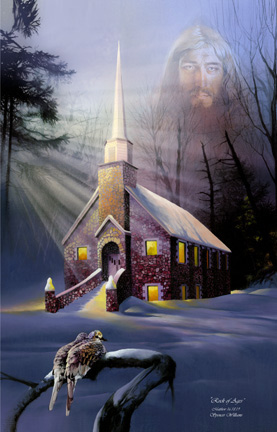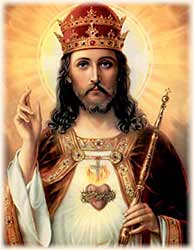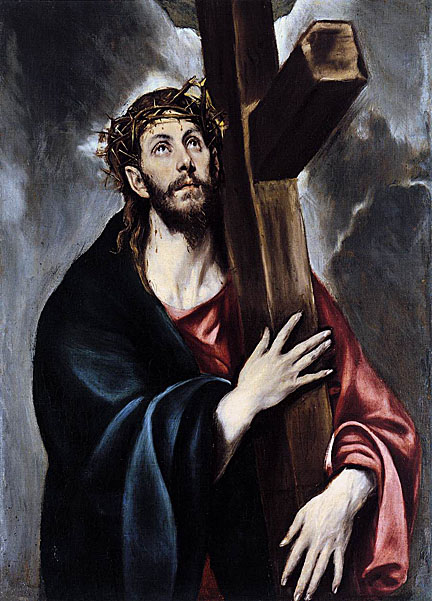The features that struck me the most about the painting "Golgotha" was its mystical yet gruesome quality, a mixture of mortal impermanence and spiritual eternity portraying the dismal site of Christ's crucifixion at the "place of a skull", or "skull hill", known as Golgotha. Painted by Ilya Repin in 1922, Russian (born in the Ukraine 1844-1930), this large 6' x 8' oil painting is part of the permanent collection of the Princeton Museum of Art. Though morbidly real in its theme, a beauty emanates through a sensitive blending of textured pastel hues contrasting with dark shadows. Both chilling and awesome, the more I studied "Golgotha" the more I discovered some profound messages in its mist-enshrouded shadows.
The part in art history where "Golgotha" belongs is somewhere between Impression and Realism, and possibly Expressionism. The subject of Christ's crucifixion painted in this Impressionistic manner, with the dogs excitedly lapping up the blood on the ground, as one can imagine dogs would do, lends itself to the category of realism as well. There isn't any obvious religious glorification going on here, just the grisly 'morning after' of a crucifixion grounds. The soft grayed complementary color blends (blues and golds with purples and oranges), contradict the morbid aura of the dieing bodies hanging on the crosses, which could lend itself to Expressionism. The use of color symbolism with the light effect forces the viewer to look into the greater meaning of the painting and see the indications of Christ's resurrection.

















No comments:
Post a Comment